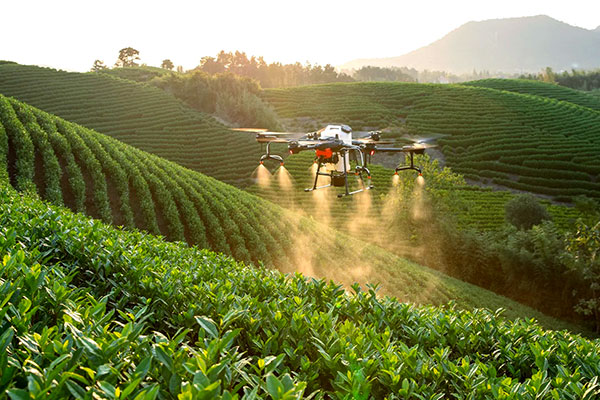Summary:
A drone pesticide sprayer merges UAV technology with precision-agriculture needs. It cuts chemical use by up to 50 %, boosts coverage uniformity, and keeps operators safely away from toxic sprays. Key design goals include modularity, accuracy, payload capacity, and ease of maintenance. In fabrication, carbon-fiber frames, diaphragm pumps, precision nozzles, and GPS/autopilot systems come together. Market growth is rapid—with a 22 %+ CAGR—driven by labor shortages, sustainability goals, and government incentives. Ultimately, a well-designed drone sprayer lowers operating costs, improves crop health, and accelerates ROI.
А drone pesticide sprayer is an unmanned aerial vehicle equipped to apply pesticides, herbicides, and foliar nutrients over crops. It flies low (1–3 m) and uses precision nozzles to release controlled droplets, thereby reducing drift and chemical waste by up to 50 % . Farmers gain safer operations and faster coverage versus manual or tractor-mounted rigs . Более того, autonomous flight planning ensures consistent application across varied terrains.

Farm Sprayer Drone Design Objectives
Precision: Deliver droplets in the 100–300 µm range to optimize canopy coverage and minimize off-target drift .
Efficiency: Cover 2–4 ha per flight with a 20–30 L tank, boosting throughput over backpack sprayers by 400 % .
Safety: Keep operators remote from toxic chemicals and rough terrain .
Modularity: Allow quick swapping of nozzles, pumps, and battery packs for diverse missions .
Sustainability: Integrate low-emission electric motors and support solvent recovery in maintenance cycles .
Drone Pesticide Sprayer Core Components
Airframe and Propulsion
A robust frame uses carbon fiber or aluminum alloy to balance light weight and strength . Brushless motors and matched electronic speed controllers (ESCs) generate stable lift, even under full payload. Rubber-damped motor mounts reduce vibration, protecting sensors and sprayer plumbing.
Liquid Delivery System
A corrosion-resistant tank (HDPE or stainless steel) holds 20–30 L of formulation. A diaphragm pump—with PWM speed control—draws fluid and maintains a steady pressure of 0.2–0.4 MPa . PTFE tubing and quick-disconnect fittings ensure chemical compatibility and fast maintenance.
Nozzle and Spray Manifold
Precision ceramic or stainless-steel nozzles produce droplets sized 100–300 µm. A CNC-machined manifold evenly distributes flow across 4–8 nozzles. Adjustable orifice plates let operators tune droplet size for ultra-low-volume (ULV) or conventional spraying .
Navigation and Control
GPS/GLONASS modules lock position to ±10 cm. Flight controllers (НАПРИМЕР., Pixhawk, DJI N3) run waypoint missions, altitude hold, and “return-to-home” safety routines . Real-time telemetry links flow rate, tank level, and battery voltage to ground-station software for live monitoring.
Power and Battery
High-energy-density Li-Po or Li-Ion packs (6 000–10 000 mAh) power motors and pumps for 15–25 minutes of flight time. Smart battery management systems prevent over-discharge and balance cells, extending battery life and mission reliability.
Pesticide Drone Fabrication Process
1. Frame Assembly
Первый, cut carbon-fiber tubes and CNC-machine aluminum joints. Следующий, bolt arms to the central hub using vibration-isolating mounts. Finally, attach motor-ESC assemblies and verify arm symmetry to ensure stable flight.
2. Tank and Pump Integration
Mount the tank on anti-vibration pads within the frame’s center of gravity. Install the diaphragm pump beneath the tank outlet, routing PTFE tubing through bulkhead fittings. Secure hoses with chemical-resistant clamps.
3. Electronics Installation
Fasten the flight controller to a damped platform. Wire ESCs, GNSS receiver, telemetry radio, and pump controller to a power distribution board. Label all connectors and route cables to minimize interference with propellers.
4. Nozzle Manifold Fabrication
CNC-mill the manifold block from aluminum. Drill precise channels to each nozzle port. Thread ports for quick-attach fittings. Assemble nozzles and test flow balance with water.
5. Calibration and Testing
Conduct static flow tests at multiple pressures; measure droplet size with laser diffraction . Perform flight trials in open fields, adjusting spray height and speed for uniform coverage. Log data and refine waypoint spacing accordingly.
Performance Metrics
| Metric | Value |
| Payload Capacity | 20–30 L |
| Coverage per Flight | 2–4 ha |
| Droplet Size Range | 100–300 µm |
| GPS Accuracy | ±10 cm |
| Flight Time | 15–25 min |
| Chemical Reduction | До 50 % less vs. manual |
| Labor Savings | 70–80 % reduction |
Pesticide Drones Applications and Benefits
Targeted Pest Control
By flying pre-mapped hotspots, the drone pesticide sprayer treats only infested zones, cutting chemical use and costs .
Herbicide Spot-Spraying
It eliminates weeds between rows with precise low-volume sprays, lowering herbicide volumes by up to 70 % .
Foliar Nutrition
Operators apply micronutrient mixes uniformly, boosting uptake efficiency and crop yield consistency .
А Design And Fabrication Of Drone Based Pesticide Sprayer brings aerospace materials, fluid-mechanics expertise, and advanced controls into one platform. It delivers up to 50 % chemical savings, 80 % labor reduction, and uniform crop protection. Как результат, farmers achieve higher yields, lower costs, and safer operations.
👉 Contact us today to discuss custom configurations or request a free quote. Enhance your precision-ag capabilities with our drone pesticide sprayer solutions!

